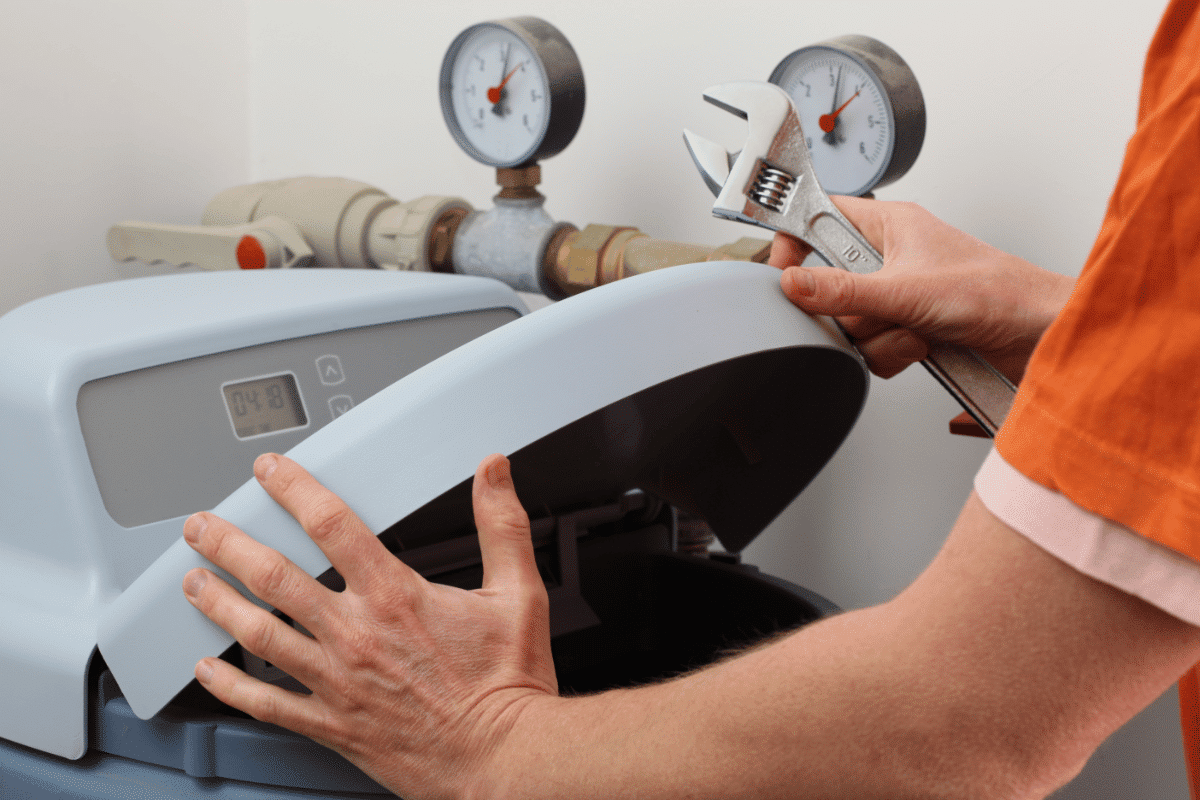August 20, 2024
The Complete Guide to Water Softeners: Installation, Maintenance, and Repair Services
If you’ve ever dealt with the challenges of hard water in your home, you know how crucial a water softener can be. Not only do they extend the lifespan of your appliances by preventing limescale buildup, but they also enhance the quality of your water, making it softer on your skin and clothes. We’ll dive into everything you need to know about water softeners, including installation, maintenance, and repair services.
What is a Water Softener?
A water softener is a unit that removes minerals like calcium and magnesium from your water supply. These minerals are responsible for hard water, which can cause a variety of household inconveniences and problems. By using a process called ion exchange, water softeners replace these hard minerals with softer ones, typically sodium or potassium, to make the water softer and more compatible with soap, extending the life of plumbing and appliances.
Installation of Water Softeners
Choosing the Right Model
Before installation, it’s crucial to select a water softener that suits the size of your household and the hardness of your water. A professional water test can help you determine the exact needs of your home.
Professional Installation
While it’s possible for a DIY-savvy homeowner to install a water softener, professional installation is recommended to ensure it’s done correctly. A professional can handle the setup, including connecting it to your home’s plumbing system and setting up the initial regeneration cycle. This not only guarantees efficiency but also complies with local building codes and regulations.
Maintenance of Water Softeners
To keep your water softener functioning effectively, regular maintenance is essential. Here are a few easy steps you can follow:
- Salt Levels: Check the salt levels monthly and refill as necessary. Low salt levels can prevent the softener from working correctly.
- Salt Bridges: Occasionally, salt bridges can form in the brine tank, causing malfunctions. Breaking up these bridges ensures that the salt can properly dissolve into the water.
- Resin Beads: Over time, the resin beads that soften the water may become less effective and need replacement. This is typically required every few years.
- Regular Cleaning: Clean the brine tank annually to prevent dirt and debris from affecting the softening process.
Repair Services for Water Softeners
Even with diligent maintenance, water softeners can run into issues. Common problems include blockages, motor failures, or electronic malfunctions. Here are signs that your water softener might need repairs:
- Inconsistent water softness
- Strange noises during regeneration
- Water not being softened, indicated by spots on dishes or dry, itchy skin after showering
If you notice any of these issues, it’s wise to call a professional repair service immediately. Delaying repairs can lead to more significant problems and potentially higher costs.
Conclusion
Water softeners are invaluable for those dealing with hard water. Proper installation, routine maintenance, and timely repairs are crucial to ensuring that your water softener continues to perform at its best. Whether you’re considering installing a new system or keeping your existing one in tip-top shape, understanding these aspects can help you make informed decisions and maintain a smoother-running household.

